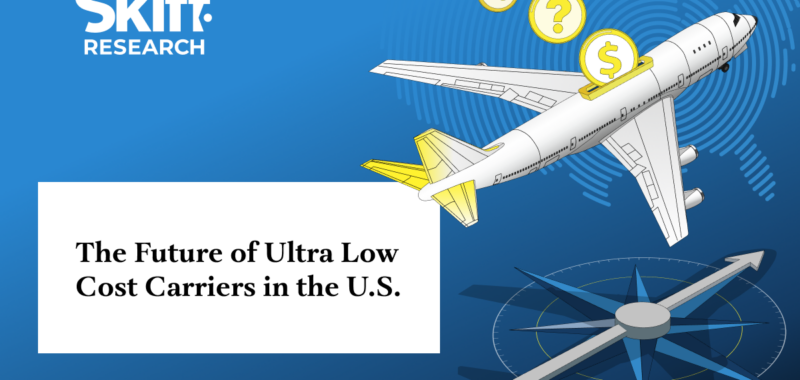Skift Take
High unit costs, reduced operational efficiencies, and increased competition from network carriers have combined to create a significant challenge for ultra low-cost carriers in the U.S.
It wasn’t that long ago that U.S. budget airlines were crushing the network carriers. They led in operating profits, with margins of around 13%.
Now, despite huge growth in travel demand, they’ve been posting major losses. Ultra low-cost carriers Spirit and Frontier are struggling the most. Some airline executives think it’s the endgame and that the business model won’t survive.
What went wrong?
Skift Research’s latest report, The Future of Ultra Low-Cost Carriers in the U.S., details why this group of carriers has struggled in the post-pandemic era.
Overcapacity: One of our key findings is that overcapacity in some of the biggest markets for ULCCs is driving down their pricing power. This issue stems from both the ULCCs and network carriers.
In 2023, Spirit increased capacity by over 50% in its top three markets, which included Fort Lauderdale, Las Vegas, and Orlando. Frontier increased capacity by 25% in its top three markets. Sun Country increased capacity by 20%.
Delta, United, and American have also considerably increased their capacity in these top markets.
Premium shift: The shift towards premium airline offerings is another phenomenon that hasn’t helped since ULCCs don’t have a comparable premium cabin onboard their aircraft compared to other legacy carriers.
They’re getting less efficient: Spirit, Frontier, Allegiant, and Sun Country have had their average aircraft utilization rates drop significantly from their 2019 numbers. In 2023, their utilization still hasnât reached pre-pandemic numbers. This means ULCCs like Spirit are flying their aircraft lesser than they were pre-pandeminc. Spirit’s aircraft utilization dropped from 12.8 hours per aircraft per day in the second quarter of 2019 to 11.3 hours in last year’s second quarter.
Rising costs: Unit costs have also gone up, driven by higher labor costs. For example, Spiritâs per unit salaries and wages cost increased by 40% in 2023 compared to 2019.
Compared to 2019, Spirit’s unit cost increased by 27% in 2023, while Frontier’s increased by nearly 20%. Allegiant’s cost has risen by over 30%. Sun Country’s unit cost has gone up by almost 12%, the lowest within the ULCC category of airlines. The higher unit cost restricts ULCCs from offering more competitive prices in a market flooded with extra capacity.
Can ultra low-cost carriers overcome these challenges, or is the budget airline business in a real existential crisis? Read our full report to find out more.

